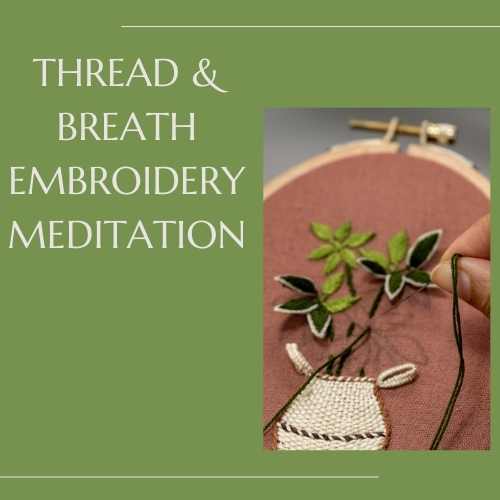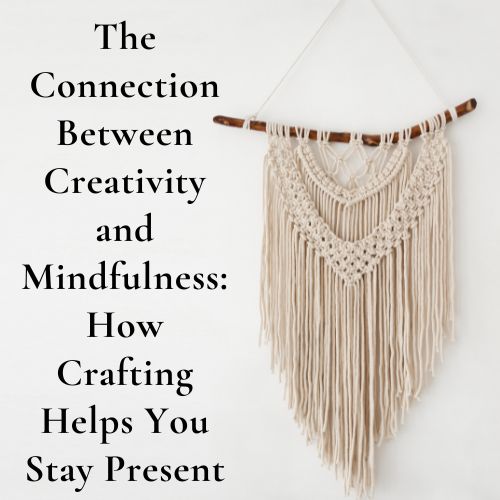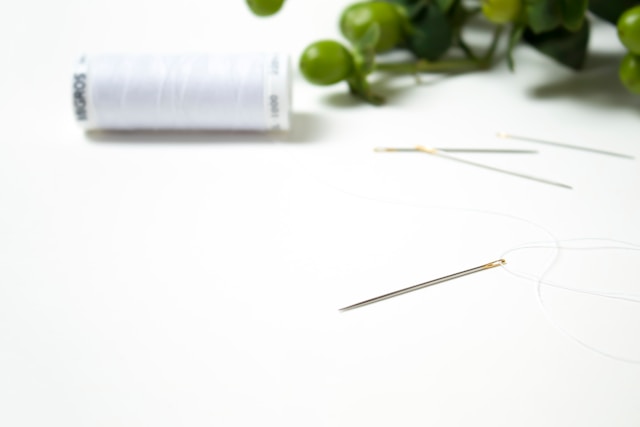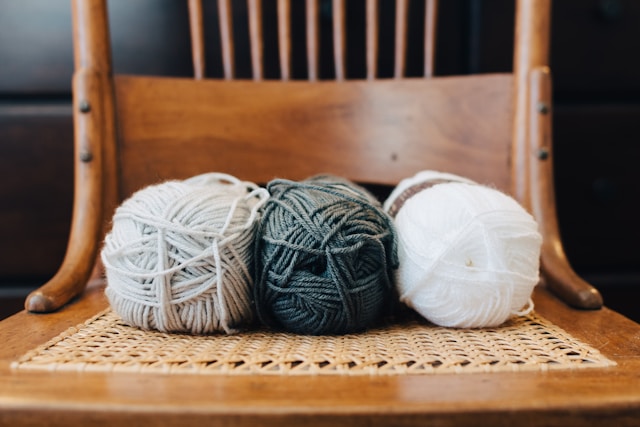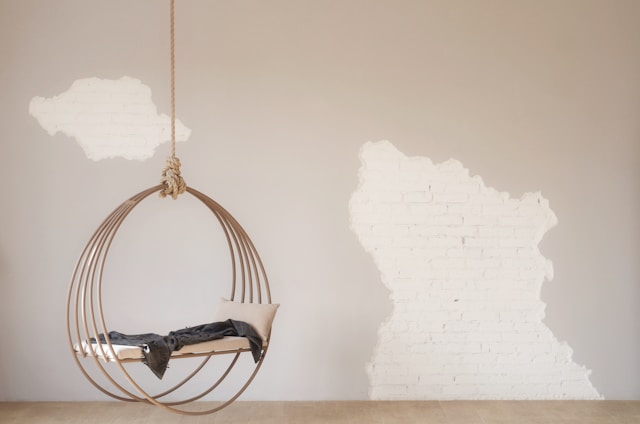Embroidery is more than just a creative practice—it’s an opportunity to slow down, focus, and find stillness in the rhythm of your stitches. This guided mindfulness exercise will help you synchronize your breath with your embroidery, allowing you to fully engage with the process and create a meditative flow.
Explore this in more depth by joining my Craft to Heal workshop.
Step 1: Prepare Your Space
Find a quiet, comfortable space to sit with your embroidery hoop. Choose a simple stitch—like a backstitch or running stitch—so that your mind can focus on mindfulness rather than technique. Take a moment to settle in. Notice the fabric stretched in your hoop, the weight of the needle in your fingers, and the gentle tension of the thread.
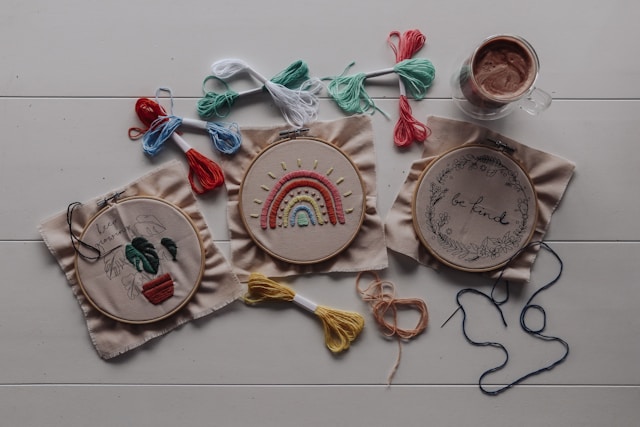
Step 2: Align Your Breath with Your Stitching
Begin stitching with slow, intentional movements, matching each step with your breath:
- Inhale – Guide the needle up through the fabric from underneath, feeling your lungs expand.
- Exhale – Pull the thread through and smoothly guide the needle back down into the fabric.
- Inhale – Draw the needle back up for the next stitch, keeping your grip relaxed.
- Exhale – Complete the stitch, letting go of any tension in your shoulders.
Allow your breath and your stitching to flow together. If your mind wanders, gently guide it back to the steady rhythm of needle, thread, and breath.
Step 3: Engage Your Senses Fully
To deepen your mindfulness, bring awareness to each of your five senses. This will anchor you in the present moment, transforming your embroidery into a full-body experience.
👁 Sight – Observe the Slow Formation of Each Stitch
Watch how each stitch connects to the last, forming lines, curves, or shapes on the fabric. Notice:
- The colors of your thread—how do they complement or contrast with the fabric?
- The evenness (or natural variations) in your stitches—each one unique and part of the whole.
- The way the fabric slightly puckers as you pull the thread through.
Avoid rushing. Instead, savor the gradual unfolding of your design, one stitch at a time.
🖐 Touch – Feel the Textures and Movements
Close your eyes for a few stitches and focus on how embroidery feels:
- The smooth glide of the thread between your fingers.
- The gentle resistance as the needle punctures the fabric.
- The tautness of the fabric in the hoop.
- The weight of your needle as you hold it lightly.
Let your hands move with ease, releasing any unnecessary tension.
👂 Sound – Listen to the Soft Whisper of Stitching
Embroidery has its own quiet sounds. Tune into:
- The subtle pop as the needle pierces the fabric.
- The soft slide of thread being pulled through.
- The occasional creak of the hoop shifting in your hands.
These sounds become a meditation in themselves—a gentle rhythm that keeps you present.
👃 Smell – Notice the Subtle Aromas Around You
Engage your sense of smell as you stitch. Inhale and notice:
- The scent of natural cotton or linen fabric.
- Any lingering fragrance from your hands or the space around you.
- The faint smell of wood if you are using a wooden embroidery hoop.
Breathing in deeply and noticing scent can further ground you in the moment.

👅 Taste – Acknowledge the Present Moment
While embroidery doesn’t involve taste, bring awareness to:
- The sensation of your breath as you inhale and exhale.
- Any lingering flavors from tea, coffee, or a recent meal.
- The overall feeling of being fully present in your body.
By tuning in to even this subtle sense, you complete the experience of mindful making.
Step 4: Release Tension
If you notice tightness in your fingers, hands, shoulders, or jaw, take a moment to pause:
- Shake out your hands gently.
- Roll your shoulders back and down.
- Take a deep breath, sighing it out as you relax your grip on the hoop and needle.
Then, resume stitching with renewed softness and ease.
Step 5: Close with Gratitude
After finishing a few stitches, set your hoop down and take a final deep breath. Reflect on the experience:
- How does your body feel?
- Did your mind feel calmer during this practice?
- What emotions arose as you stitched?
Before moving on with your day, take a brief moment of gratitude—for the time you dedicated to yourself, for the materials in your hands, and for the peaceful energy you cultivated in your craft.
Why This Works
This practice blends focused attention meditation (concentrating on your breath and stitching) with mindfulness meditation (observing sensations without judgment). By aligning your breath with your movements, embroidery becomes not just a creative act, but a tool for relaxation and emotional well-being.
Try this for just five minutes a day, and watch how both your stitching—and your sense of inner peace—begin to flow with greater ease. 🧵✨
